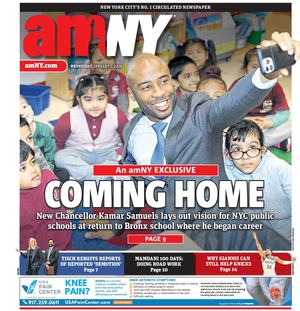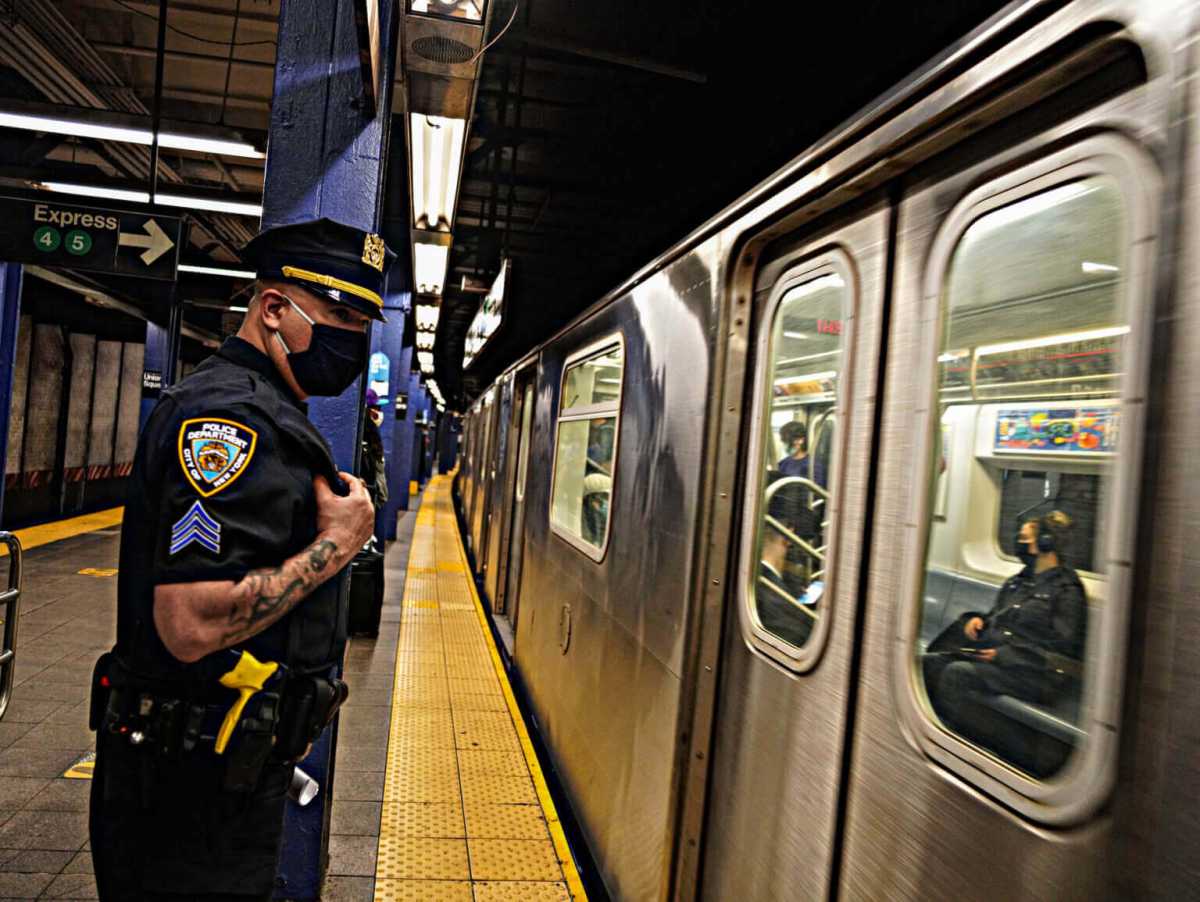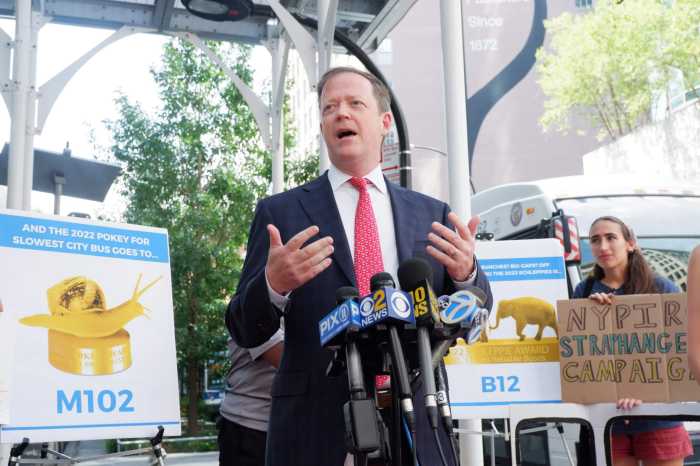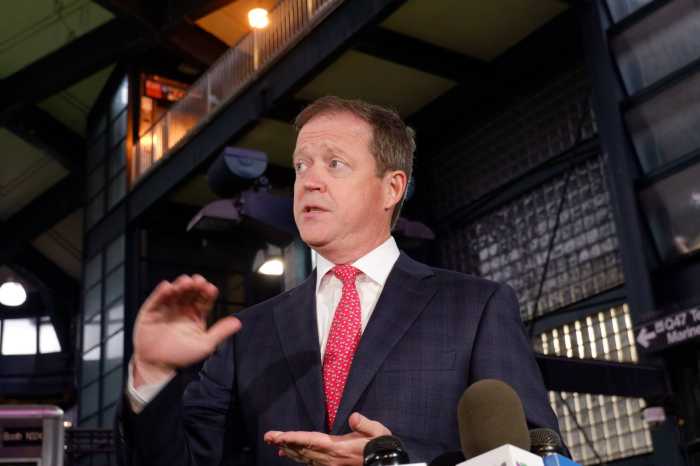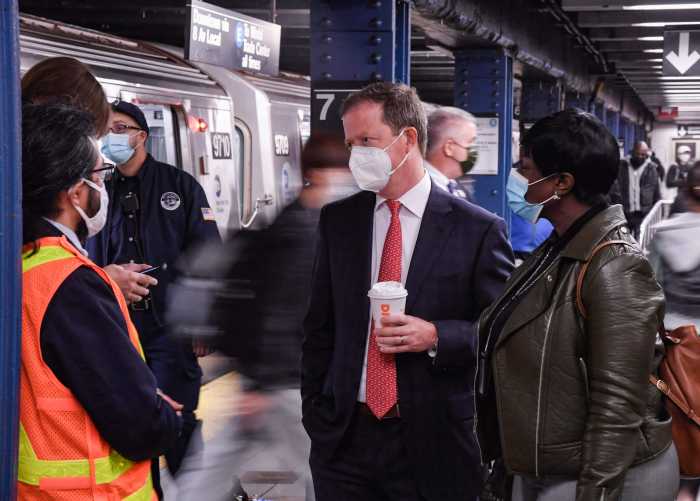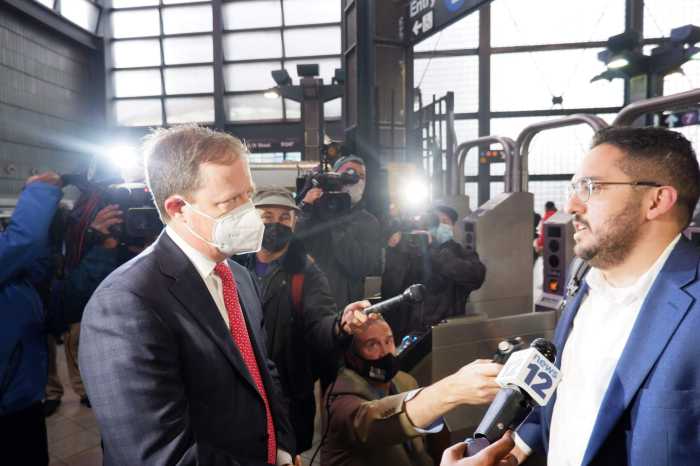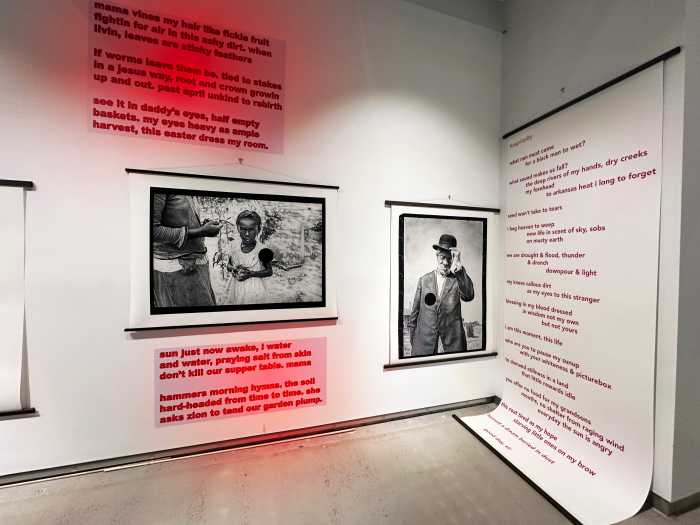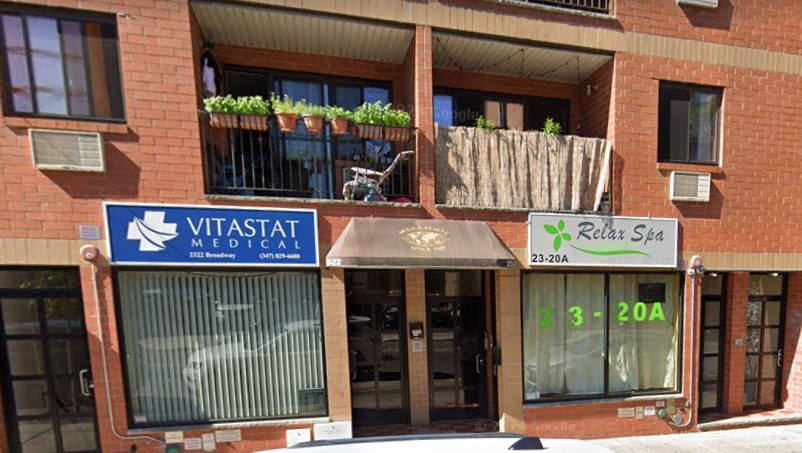The new announcements on the subway denoting the presence of NYPD officers on train platforms have not led to any increases in dwell time for passengers, said MTA subway and bus chief Richard Davey — though some advocates are not waiting to voice their skepticism.
Davey made the remarks in testimony to the City Council’s Transportation Committee during an oversight hearing on subway safety on Monday.
“We look at the dwell times on a monthly basis. We see no evidence of the dwell times increasing, that’s for sure,” Davey said, in response to a question from committee Chair Selvena Brooks-Powers regarding the policy’s impact on the times in which subway trains sit in the stations while passengers board and depart. “We’ve heard more positive than negative from our employees and customers, for sure.”
The announcements have become a ubiquitous part of New Yorkers’ subway commutes over the past month, since the city and state launched a campaign to beef up police presence in the transit system amid a series of high-profile violent incidents.
The announcements — automated on some trains and manual on others — notify riders of the presence of NYPD officers on a platform in a given station, should they have any questions or concerns.
On some trains, the announcement is made as the train enters the station, before the doors are opened, while on others it’s afterward. For the latter, the announcement can add a few additional seconds of time before the train departs the station, which on a route with many announcements can add up to a longer commute; Davey conceded that on some trains that could be the case, but said system-wide it hasn’t caused a dip in on-time performance.

“Do I accept the proposition that on a train, there may be a few seconds added? Of course,” Davey told reporters following his testimony. “But across the system, we have not seen a degradation of service. In fact, subway service was better in November than October.”
Nevertheless, the announcements have been met with skepticism of their efficacy in some corners of the transit world.
Ben Kabak, a transit blogger better known as Second Avenue Sagas, said on Twitter that he didn’t buy what Davey was selling.
I haven't broken out the stop watch but considering some of the trips I've been on where they've made this announcement at 60-70% of the stations, I have a tough time believing this. https://t.co/6NMmzpRWUD
— Second Ave. Sagas (@2AvSagas) December 12, 2022
“I haven’t broken out the stop watch,” Kabak tweeted. “[B]ut considering some of the trips I’ve been on where they’ve made this announcement at 60-70% of the stations, I have a tough time believing this.”
Danny Pearlstein, communications director at the Riders Alliance, also said he feels dwell times have increased in his own experience, and said the announcements should be phased out.
“I’ve noticed a few seconds of additional dwell time due to the new public safety announcements,” Pearlstein told amNewYork Metro. “Given that riders want to get to our destinations as quickly as possible, it’s important for the MTA to provide metrics or a timeline for phasing out the new policy.”
Davey noted that the announcements may ultimately become less ubiquitous in times of lower deployment on platforms, but expects them to remain for the long haul.
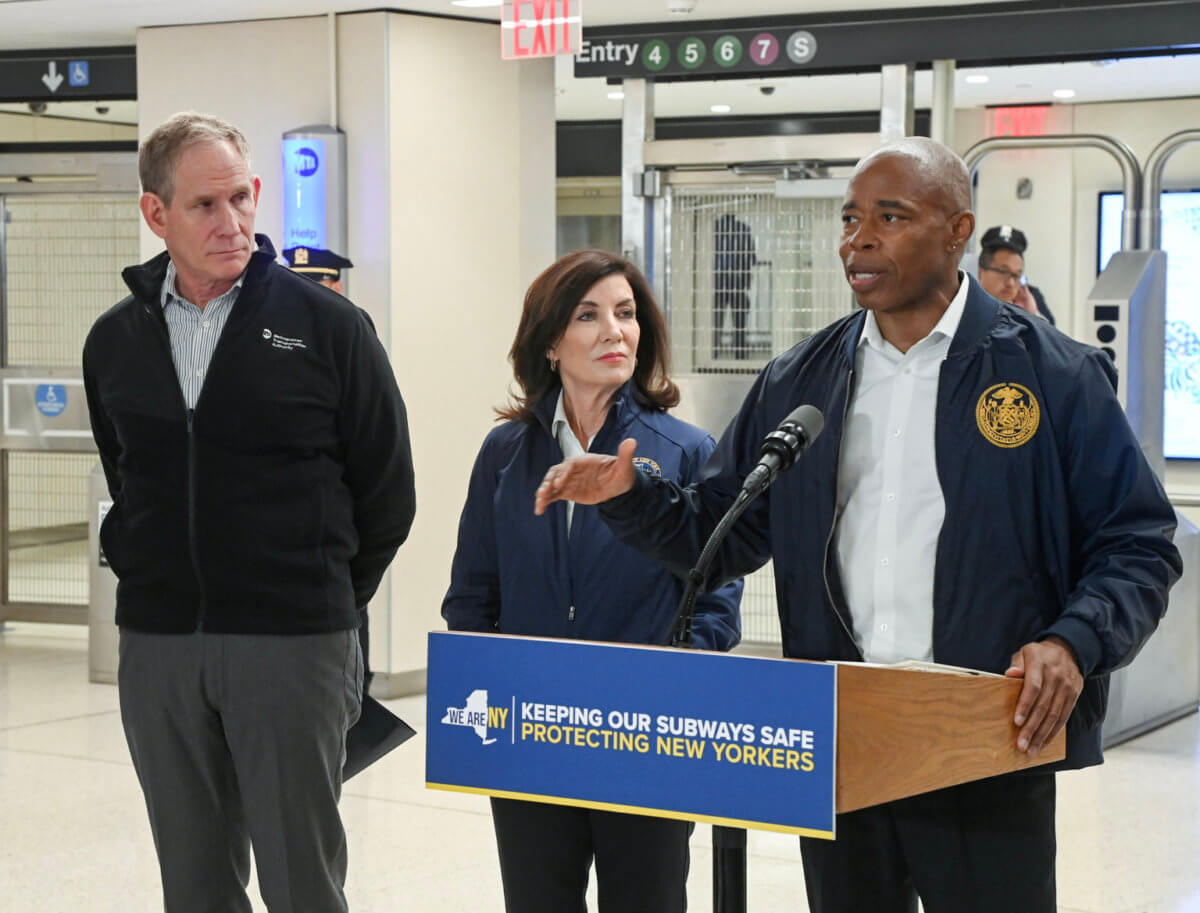
Support is not unanimous among train crews either. Conductors and union officials grumbled to nonprofit news outlet THE CITY that not only do dwell times seem longer, but that the announcements may even put a target on their head for emotionally disturbed persons.
Davey said that the immense cache of data the MTA collects each month shows no meaningful increase in dwell times, highlighting on-time performance and customer journey time. But the data on the MTA’s public dashboard only goes through July of this year, three months before the police surge and start of the announcements.
Asked for more contemporary data supporting Davey’s claims, an MTA spokesperson told amNewYork Metro that preliminary data shows a 1-4 second increase in dwell time at a sample of stations with officers on the platform, compared to the month before the change, and said the data suggests no impact on overall on-time performance.
On Twitter, MTA spokesperson Tim Minton replied to Kabak by noting the announcements take less than 5 seconds and are made when passengers are entering and exiting trains.
Announcements about police district offices in stations are often made as trains approach those locations. Mentions of officers on platforms take less than five seconds and are made while riders exit and enter.
— Tim Minton (@timmintonNY) December 12, 2022
Not everyone is a hardened skeptic, and some think that even if it adds a few seconds, the announcements are probably worth it.
R train rider Samuel Serrano said at the Jay Street-MetroTech station that he isn’t sure whether he actually feels safer because of the announcements. But he also isn’t sure they’ve meaningfully lengthened his commute, and thinks they’re probably useful, especially for those not used to the system and the unpredictable things one can encounter underground.
“I know the times that they do announce it, it’s very brief and then the doors close. I don’t see it being delayed, I do see it just being a brief announcement, a couple of seconds, and then it’s on its way out,” Serrano said. “I mean, it’s cool they do announce it, just so people are aware. Maybe they’re new to the city, so they do know that cops are available.”
MTA customer surveys show personal safety is subway riders’ number one concern keeping them dissatisfied with service, and potentially keeping others from returning to the system entirely. The MTA is doggedly attempting to lure people back to the subway as ridership remains below pre-pandemic benchmarks, which has precipitated a fiscal crisis at the agency and talk of the first transit fare hike since it was set at $2.75 in 2015.
For many others, though, it’s like nothing has even changed.
Jerry Zou is just one of innumerable straphangers who wear headphones throughout their journey; with his bulky, over-the-ear headphones canceling out the transit system’s ambient noise, Zou carries on without hearing any conductor announcements at all.
“Not really, it’s been the same,” Zou noted when asked if he feels safer this month than last. “I always do [wear headphones], so I don’t hear anything.”
